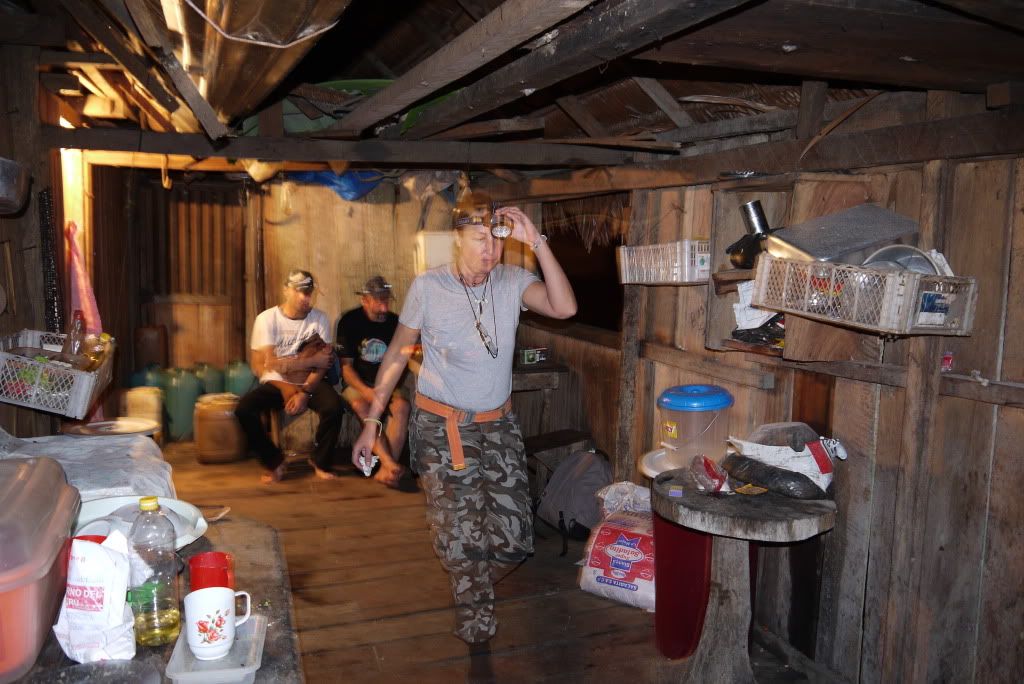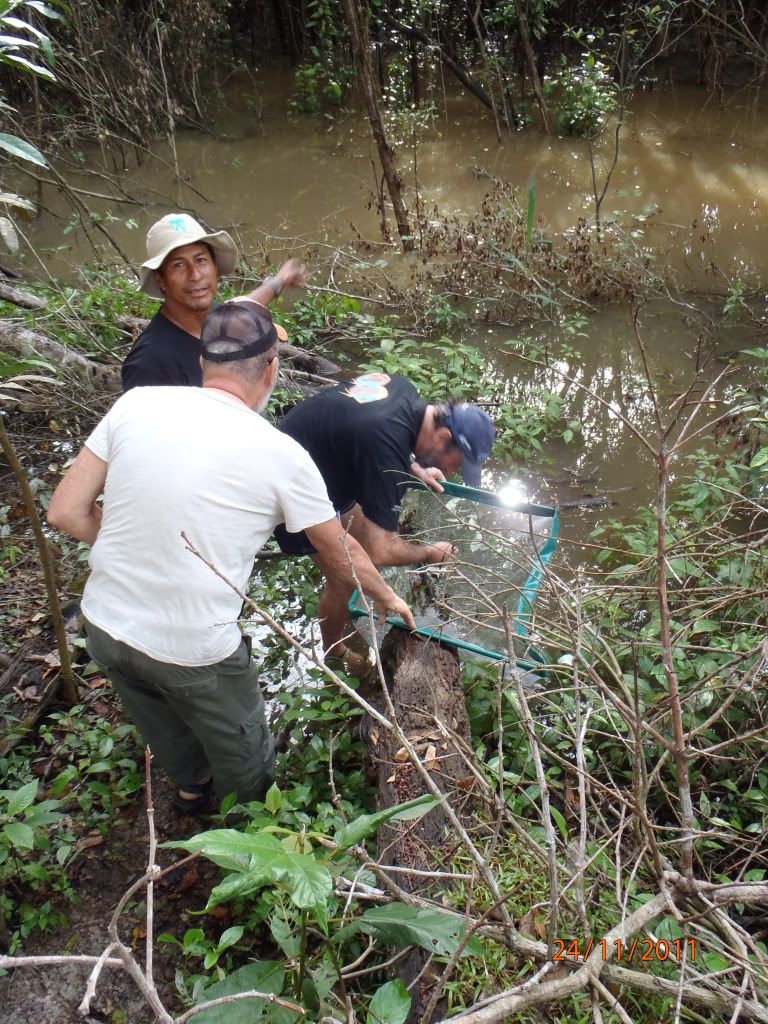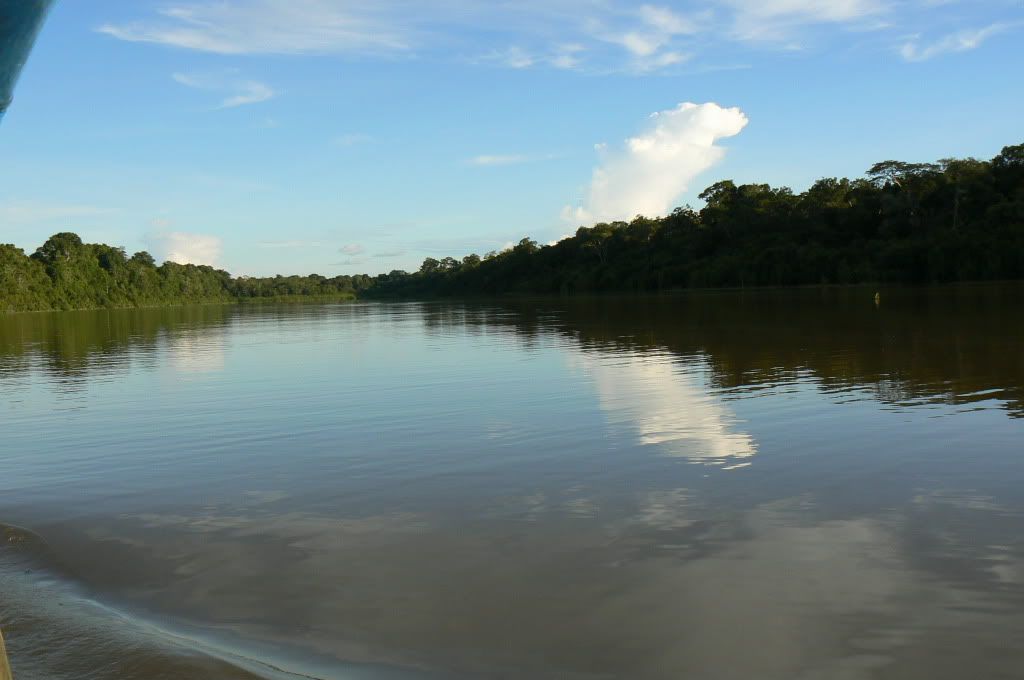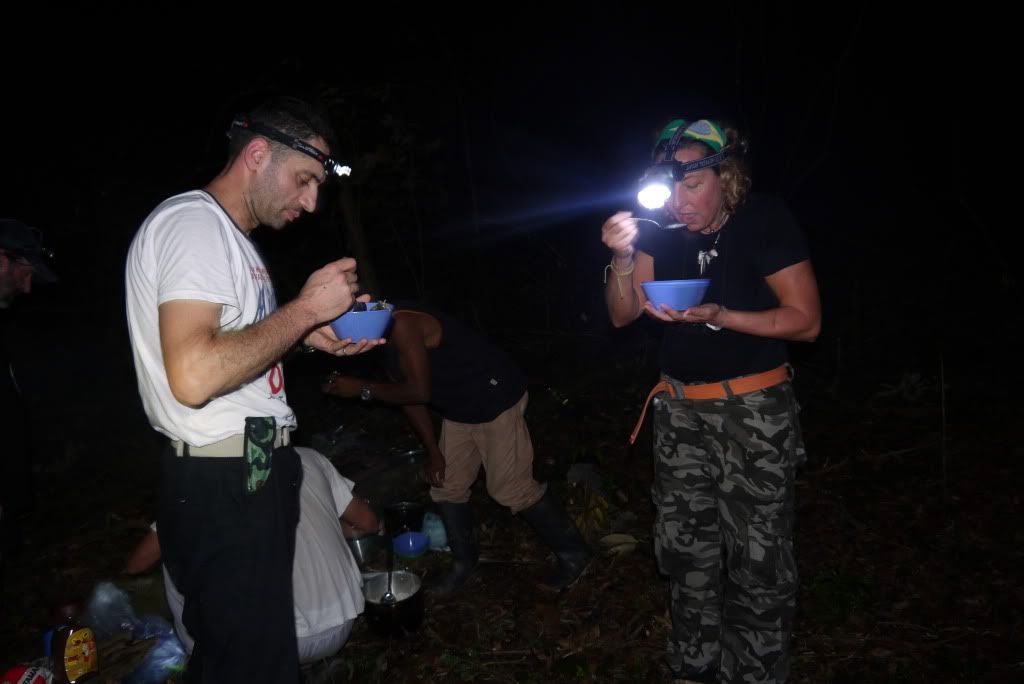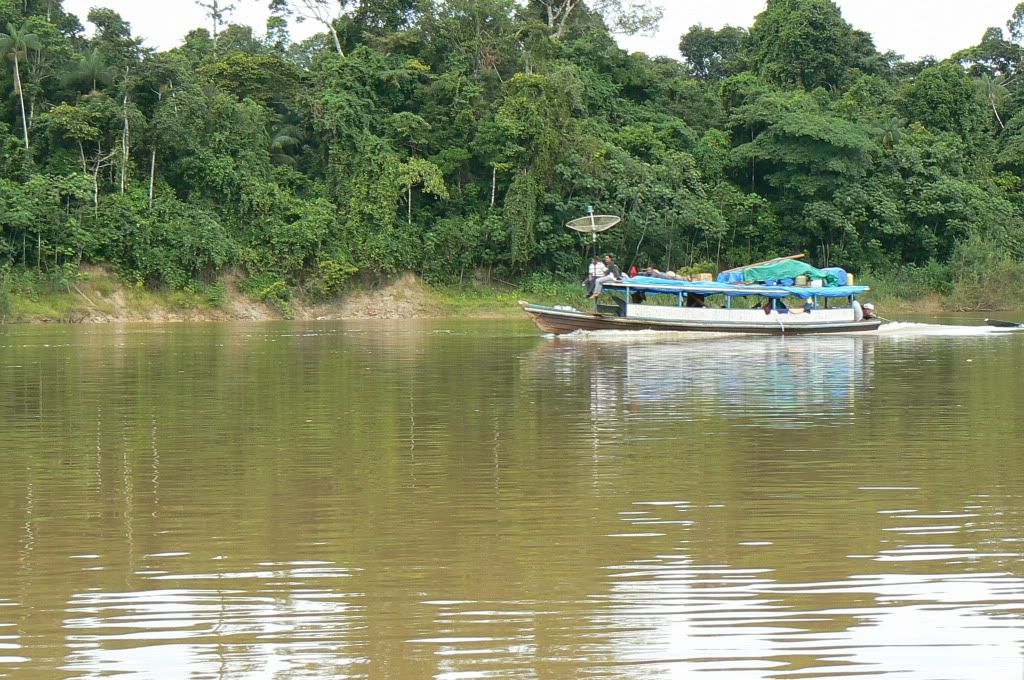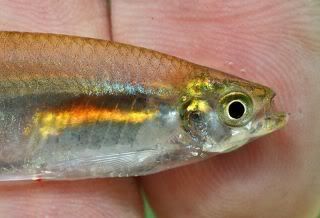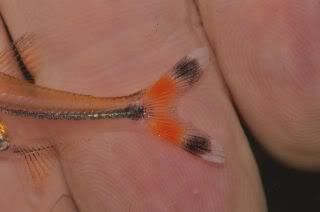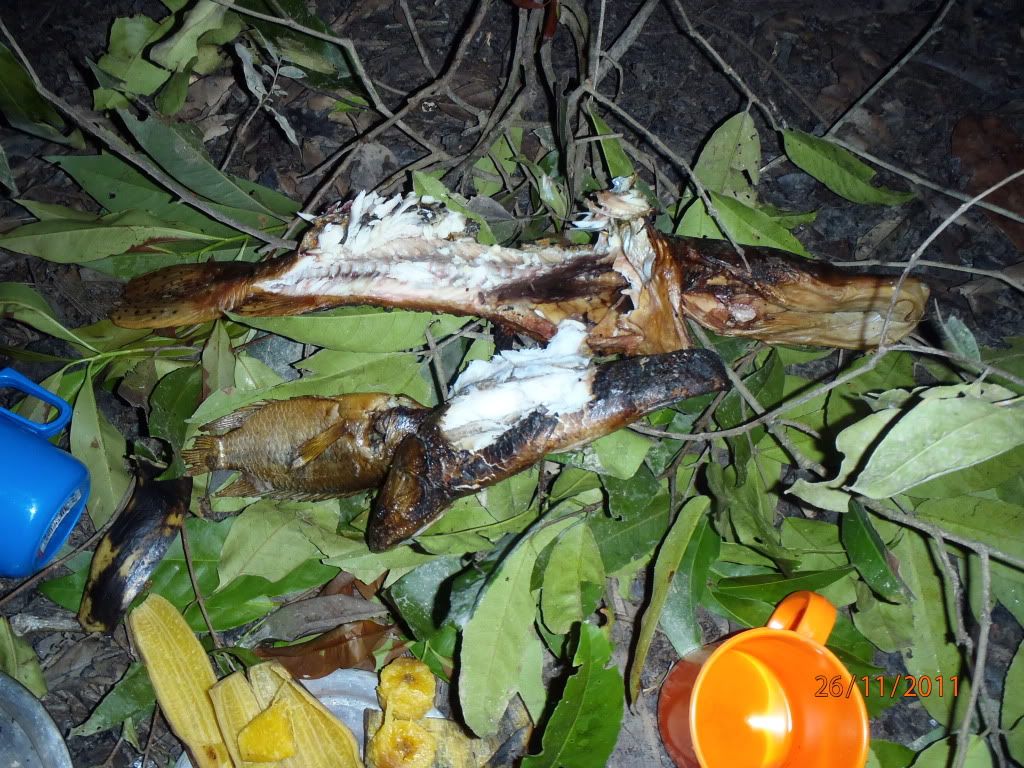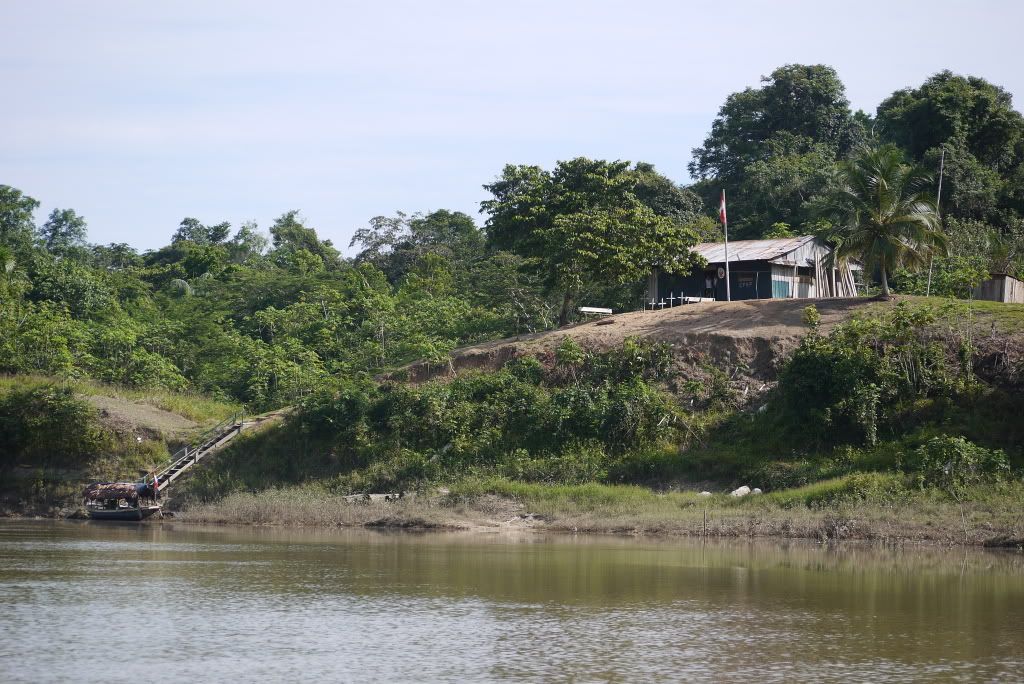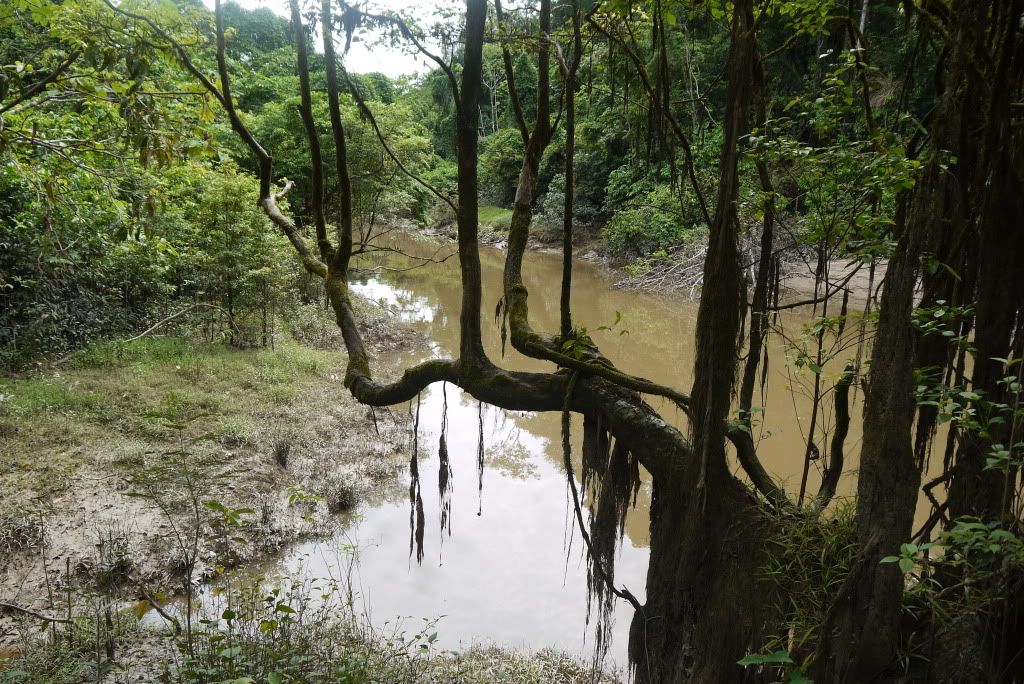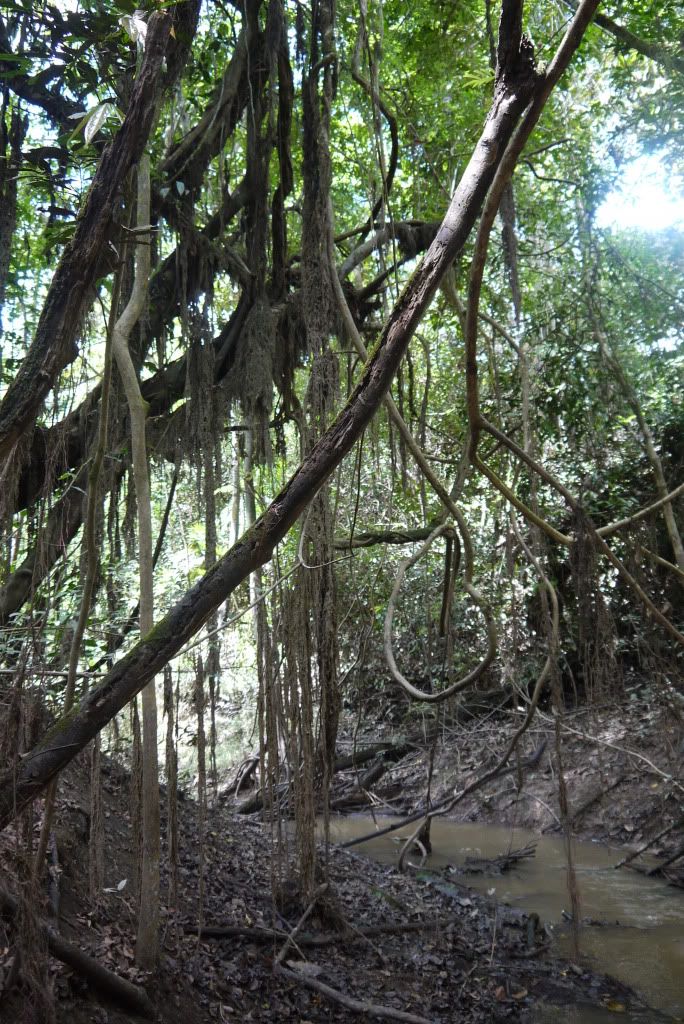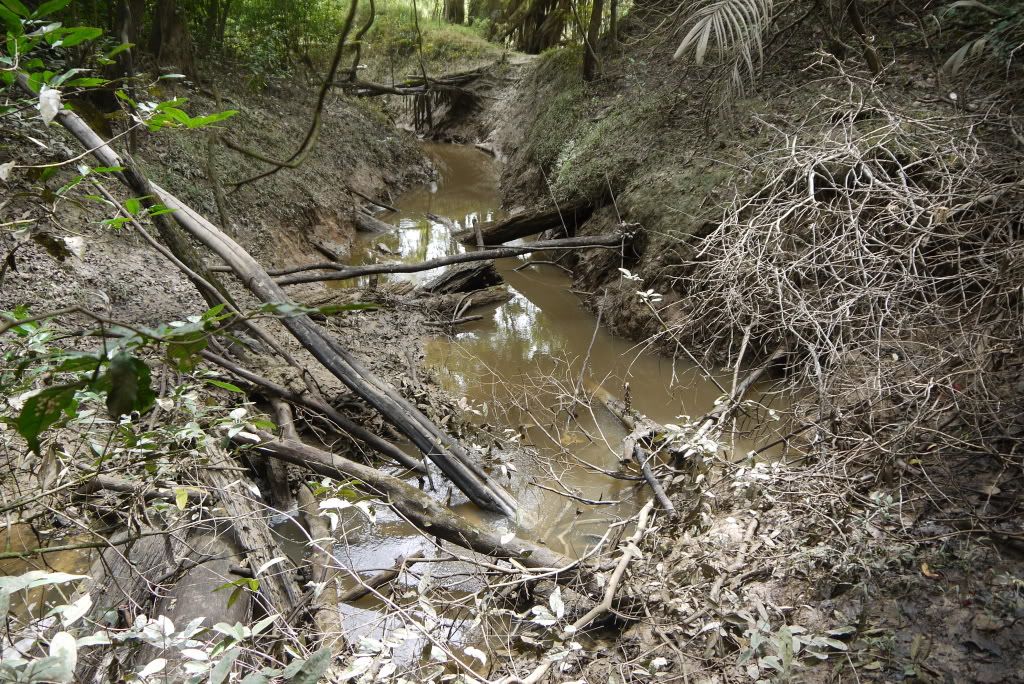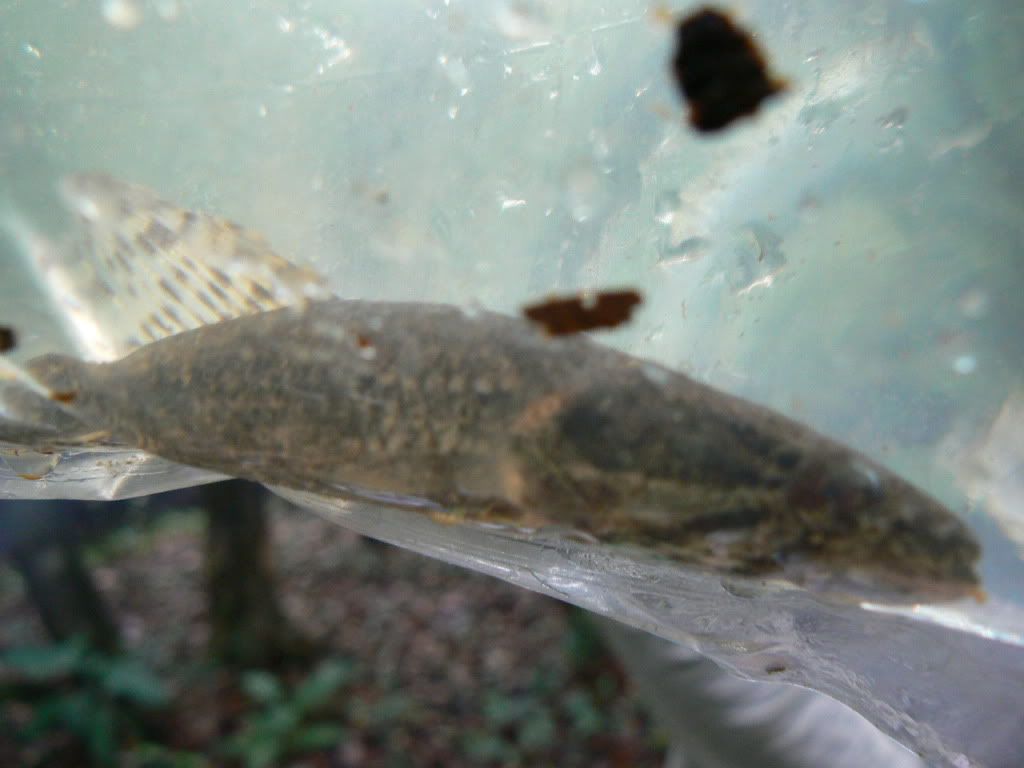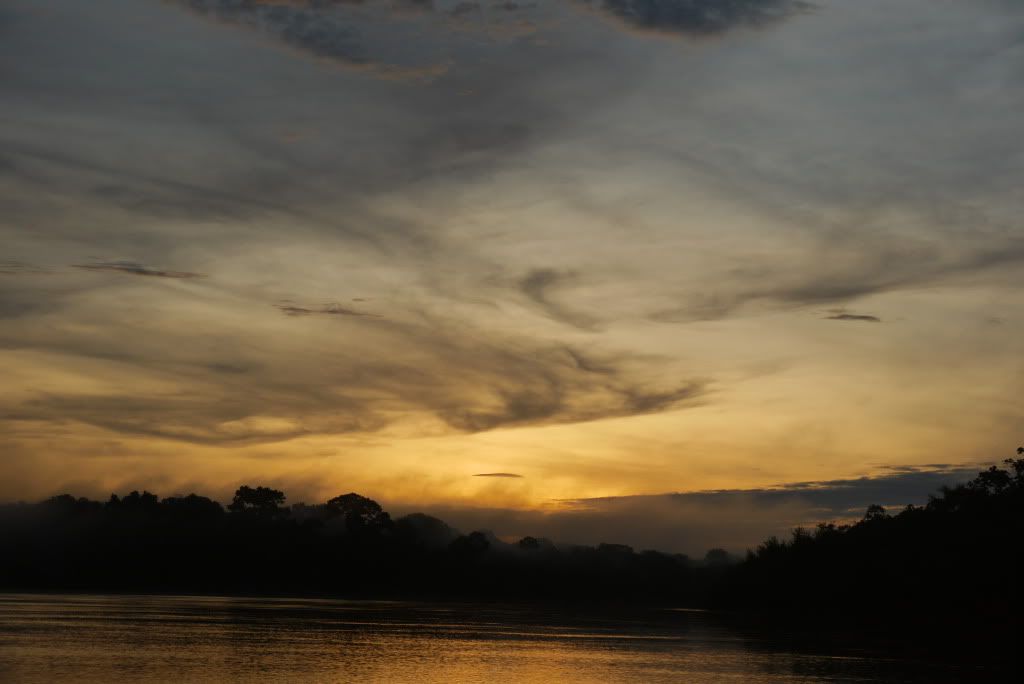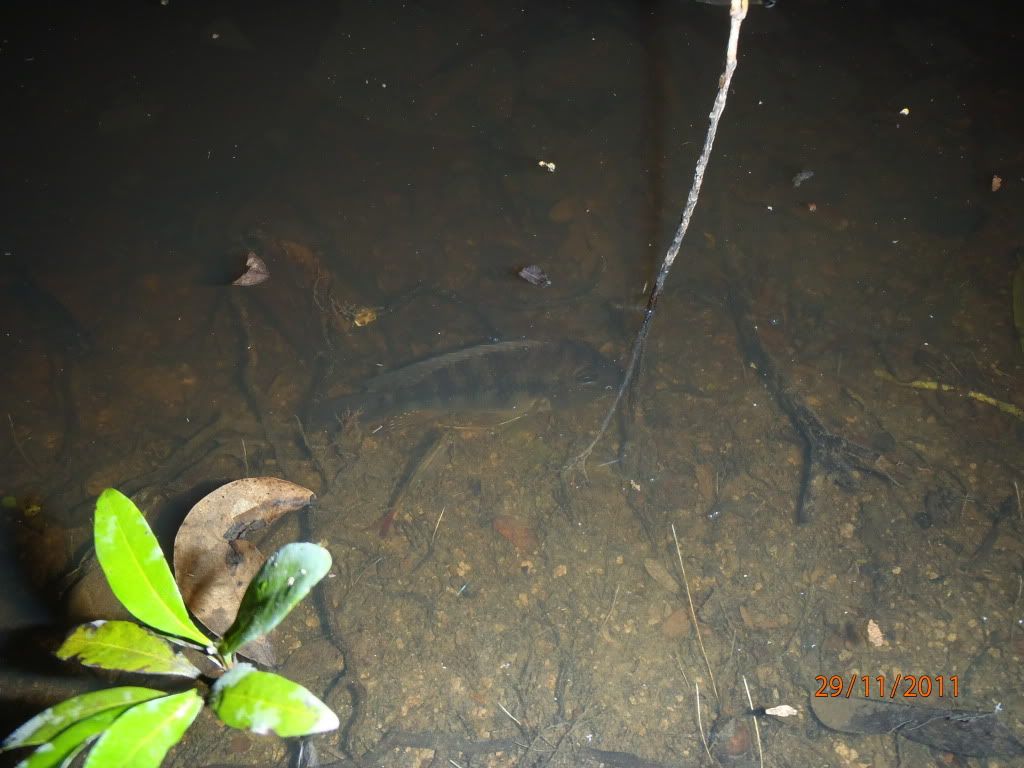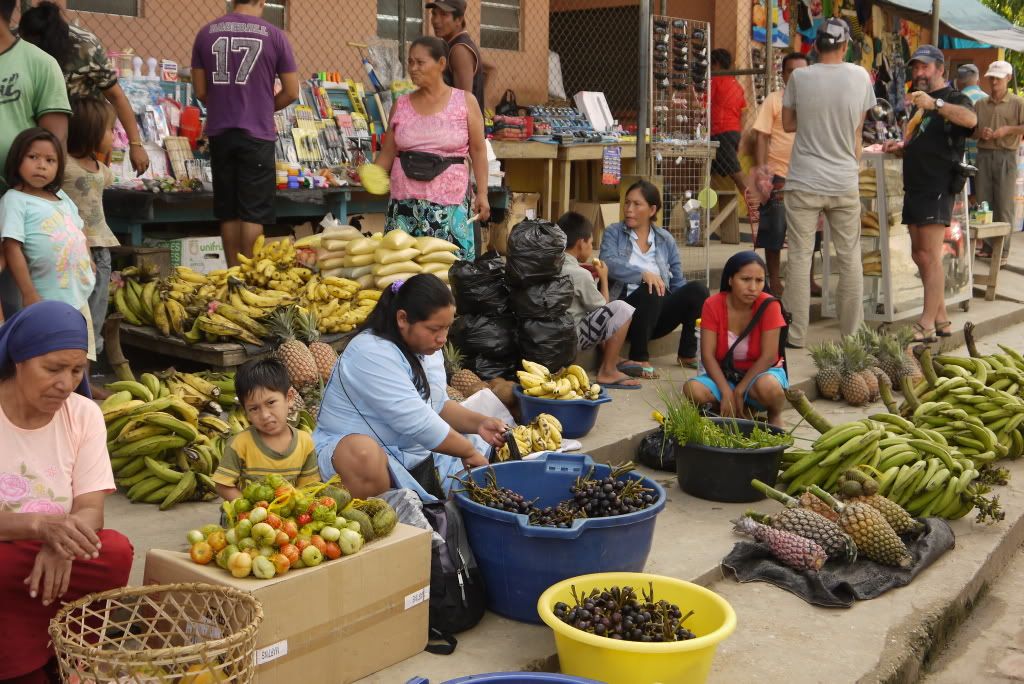Retirement and forum shutdown (17 Jan 2022)
Hi,
John Howell who has managed the forum for years is getting on and wishes to retire from the role of managing it.
Over the years, he has managed the forum through good days and bad days and he has always been fair.
He has managed to bring his passion for fish keeping to the forum and keep it going for so long.
I wish to thank John for his hard work in keeping the forum going.
With John wishing to "retire" from the role of managing the forum and the forum receiving very little traffic, I think we must agree that forum has come to a natural conclusion and it's time to put it to rest.
I am proposing that the forum be made read-only from March 2022 onwards and that no new users or content be created. The website is still registered for several more years, so the content will still be accessible but no new topics or replies will be allowed.
If there is interest from the ITFS or other fish keeping clubs, we may redirect traffic to them or to a Facebook group but will not actively manage it.
I'd like to thank everyone over the years who helped with forum, posted a reply, started a new topic, ask a question and helped a newbie in fish keeping. And thank you to the sponsors who helped us along the away. Hopefully it made the hobby stronger.
I'd especially like to thank John Howell and Valerie Rousseau for all of their contributions, without them the forum would have never been has successful.
Thank you
Darragh Sherwin
Amazon-Yavari-Mirim Trip
- arabu1973 (. .)
- Offline
- Senior Member
-

- Posts: 316
- Thank you received: 37
In November 2011, I had the rare opportunity to visit one of the wildest places in Neotropics by participating in an expedition to the Amazon in search of new species of fish by exploring rivers that have not been explored until now, upper Mirim, Arabella and Capybara canos (creeks). The expedition was organized by a well-known expert on fish and explorer, Heiko Bleher.
On Monday morning, 21 November 2011, i left Dublin for Paris then Bogota and finally Laeticia (COL)/Tabatinga (BRA) which were the starting point cities for this trip.
I arrived in Bogota, Colombia's capital, Monday afternoon (it was still Monday because they are 5 hours behind Dublin), tired and without a word of Spanish but very happy that I finally arrived in South America.
First impression of Bogota wasn’t too good, the road from the airport to the hotel, where i was to meet Heiko, crossed the city from one end to the other through the city centre. Most of the buildings were old and rundown. After i arrived at the hotel I was advised not to go out at night.
The hotel receptionist spoke only Spanish, the hotel owner told me that it is very hard to find someone who speaks a language other than Spanish, so trying to explain to the girl that I want a room for one night and her looking at me and smiling was quite funny. After a while she let me use the computer and with the help of Google translator I made myself understood, I got a room for one night and I left a message for Heiko to meet in the morning for breakfast in the restaurant, his plane didn’t land until 23.30.
The next morning, Tuesday, 22 November 2011, in the restaurant I met Heiko and the other two companions that came with us on this trip, Hartwig, a German living in Italy and Claudia a Brazilian living in Italy and Phucket. After the necessary introductions I ordered breakfast, traditional Colombian TAMALES that is polenta filled with meat and vegetable boiled in banana leaves.
After breakfast we went to the airport to take the 11.00 am plane to Laeticia.
Heiko is busy all the time, if he doesn’t check/reply to e-mails on his laptop then he documents everything on paper.
After 2 hours of flying I see the Amazon for the first time
and very quickly afterwards, 13.00 local time, the airport in the town of Leticia, which is right on the edge of the Amazon.
where we are met by Steven from UK that has a lodge in Laeticia, situated at 5 km outside the town
where we will spend one night before the departure on the expedition and one night before the return to Bogota. We couldn't leave for the lodge before we had a close look at this area of the Amazon
where we saw how the poor people live on the outskirts of the city.
After we had a good look around we left for the lodge where we checked out our room for the night. We had a huge meal because we knew that now was the time to eat as much good food as we could because in the jungle the food wouldn’t be so diverse.
The next morning, November 23, after breakfast we checked and packed our bags for the expedition and then we went to Laeticia/Tabatinga to do last minute shopping and to embark on our boat that was to be our means of transport for the next 7-8 days.
Tabatinga port, Brazil
Here I must mention that on a map, Laeticia, looks like it’s located a few kilometres distance from Tabatinga, in Brazil, but in reality the two towns have expanded so much that now are like a city divided in two, the main street of Laeticia continues with the main street in Tabatinga, you know that you have crossed from one country to another only when you see a piece of wood on the footpath that says ' Forza Nacional "... there is no border or border guards.
Until the boat driver went to buy 800 gallons of diesel for the expedition, we decided to have one last hearty meal until our return from the trip, in a restaurant in Brazil
Heiko has advised me to try the original Cola
After we finished eating, we boarded the boat and we crossed the river Amazon in Peru to get a peruvian visa, because the river Javari (local language) or Yavari (on maps) is the border between Brazil and Peru.
The town right across Laeticia/Tabatinga on the Peruvian side is called Santa Rosa but if it wouldn’t be for this sign
you wouldn’t even know that you crossed into Peru. There is no proper port in Santa Rosa, it’s just a wooden house that has this painting on it
The Visa Office was a room with a counter and a wooden bench and this room was attached to the house of the person who gave the visas.
After we received the visas, we stopped at the floating shops for the last supplies
Not long after we left Laeticia/Tabatinga/Santa Rosa the night fell very quickly
Here on the Amazon, the day turns into night very quickly, it takes about 20 minutes from daylight to change into full night. The day starts at 05.00 am and is dark at 18: 00.
The plan for today was to get to a village called Santa Rita before dark but it was not so, and besides that, at 19.00, it started to rain so heavy that we couldn’t see a meter in front of us, so we had to stop for a few hours until it stopped raining. In the photo above you can see the Indian guide with a flashlight, which works on the boats battery, illuminating the river, to see where we go. Around 10 pm, we arrived in the village that we were looking for, where we were greeted with great warmth by the village/tribal chief. They were Indians from the Jagua tribe and the chief had offered his home so that we could cook some food in his kitchen
and to hang our hammocks if we want, but because we had tents we've installed them between two huge trees that were near his house. After eating I put up my tent near one of the trees and when I finished I had the pleasure to see who my neighbour was for that night
a tarantula the size of my hand, with thick, hairy legs even hairier than mine! I checked that the entrance to the tent was secure because I didn’t want to wake up in the middle of the night with him keeping me warm. I didn’t think I’d sleep at all because I had so many thoughts in my head and I was full of adrenalin just thinking about how it would be tomorrow.
24 November, a cold and foggy morning, only now I realize why Heiko told me to bring warm clothes and thick socks, it’s a big temperature difference between day and night.
We said thank you to the chief for the hospitality and for letting us to use his house/kitchen to cook
and we continued our travels on the river
Speaking of boats, the boat in the next picture is the local bus, because the roads are almost non-existent and the ones that do exist in the jungle are used only by the trucks. Goods are transported on the top of the boat, people and animals inside
And this is the fast boat, not many can afford a trip with this boat
a few hours later we stopped for a walk through the jungle
After an hour of cutting lianas and other plants, which was exhausting, we returned to the boat. A while later on the left bank of the Amazon we saw a small waterfall and we decided to explore the creek
The holes that are seen in the bank are the caves where in the rainy season the males of the catfish family take care of the eggs deposited by the females and the fry until they leave.
Heiko has decided to climb up to the bank to explore the creek, it was very hard to climb the steep bank but when he came back down he did it a lot faster!
The water was very deep; the waterfall is located in the curb of the river. Until Heiko returned we did some fishing and took some photos
This type of fish is found everywhere and it is very tasty, we ate a lot of them during the trip. After Heiko returned we continued and we saw several villages/native houses
When we arrived at the entrance to the river Yavari (Javari local language) we stopped for lunch at a camp which one of the local tribe’s uses when going to hunt and have to sleep in the forest
Until the food was ready Heiko searched for fish around the camp but the water was too dirty and he didn’t catch anything
The fishing net that Heiko is using is made of a special material that the catfish and corydoras fins don’t get stuck in
After lunch we got on the road again and before it got dark we got to the next stop, a lake which is reached by a narrow channel from the river
In the last photo top right you can see how much the water level increases in the rainy season, those being the tree roots. After 15-20 minutes of navigating the channel we entered the lake itself, lake Fregatta
we put up the tents for the night
and we caught dinner, two types of PIRANHA, white and red belly
then we ate piranha soup, it was so good...
With full bellies and the renewed energy we went to search for fish
It is not easy to look for fish at night time, you have to be very careful about the caimans and snakes, especially anaconda and when you sort among the leaves and small branches, you have to have great patience not to throw away any leaf or branch that could have stuck to it a small fish or even a new one for science. After 3 hours of searching for fish we decided to get back into camp for the night. When entering my tent, on the tree beside me, i discover my neighbour for that night
A black scorpion, just my luck, I have a “neighbour” again.
On the morning of November 25, we boarded again and we started off on the next leg of the trip. As we left the lake we saw a pink dolphin
The dolphin is not to visible due to the fact that they come up to breathe only every 20-25 minutes, just for a few seconds and it's very hard to take good photos. Throughout the expedition I took a lot of photos trying to capture a proper photo of a dolphin but only the photo above was the best.
On the Amazon live two types of dolphins, actually one, the pink dolphin is part of the whale family, only the grey dolphins are real dolphins.
Another type of boat that we saw on the Amazon was this
This boat is in fact a family house, they live their entire life here and at the same time they use it for the transport of goods as a source of income.
Pedro, one of the Indian guides told us that he knows a shortcut that cuts across the loop of the river from side to side that saves us a few hours of travel on the main river so we decided to use it. We didn't even know when we got to the shortcut; the entrance to it from the river was a wall of greenery
but after a few minutes of cutting the branches with a machete we entered on what was the connection between the two sides of the loop
We barely entered the channel when it started to rain heavily and to our "joy" we saw that we’d have to get out of the boat to push/pull the boat over the trees that had fallen across the channel
After we managed to surpass all the obstacles the channel got wider and we saw in a few different places biotopes for catfish, one in stone and one in clay
And then we stopped at a creek where we searched for fish
in the three pictures above you will realize how much the water level increases in the rainy season, in the last photo I’m in the place where the water level is in the rainy season.
The creek was a blackwater biotope, on the bottom was a little sand and a lot of clay but there are no aquatic plants
A few pictures of what fish we caught in this creek, all are new to science
Tetra
Knifefish
After we finished exploring the creek we continued up the channel to the main river and then up the river until around 17.00 when we found the entrance to a small lake where we made camp for the night. When we entered the lake we had seen many caimans and I decided that if I’m here on the Amazon I’ll have to try to catch one, so after dinner i went looking for one, after 10-15 minutes I saw one in the water on the edge of the lake
and
I caught one, not a big one but hey it's a caiman, a spectacled caiman. After we all took some pictures with him I let him go and we prepared for bed.
It wasn’t a bad day, dolphins, two species of fishes new to science, a caiman
November 26, after a breakfast composed solely of fish, tiger shovelnose catfish, aequidens and piranha
we travelled on, full of adrenaline knowing that today we will reach the final destination, the confluence of Arabella and Capybara. After a few hours we reached the entrance to the Mirim River but before we could get up the river we had to stop at the Peruvian checkpoint for the passports to be checked
After we finished at the checkpoint we entered the Mirim River
After a while we found a creek that flows into Mirim and we decided to explore it
Where the creek flows into the Mirim has formed a turning point where I saw many holes made by the catfish in the loamy soil
As you can see in the pictures below, the water in the creek was very dirty due to the muddy riverbed
About after an hour of exploration and after we caught some fish we moved on further up the river. Along the way we discovered a nest of black caiman
after we've finished taking the pictures we let him go and we continued with he trip. Of course, before reaching the final destination we had to have some more obstacles to pass
After some time of pulling/pushing and cutting we managed to surpass this obstacle and after an hour we arrived at the final destination, the place where the rivers Arabella and Capybara meet to form the Mirim river.
While the guides prepared the food for lunch, Heiko prepared his little photo tank to take pictures of the fish that we had in plastic bags in the boat, the majority were new to science. I started to explore the river to see what fish can be found in this place, a few pictures of some of the fish we caught
and for dinner, tiger shovelnose catfish
Pictus catfish
Piranha, contrary to what many know, that piranha attack people, this is not true, they only bite when they are removed from the water to escape. Heiko was swimming in the river when Stephen caught a piranha
The day flew by; we were busy taking pictures, exploring the river, fishing. Before I went to bed I had seen a few interesting insects, a blue Moth/ Night butterfly
a cricket with very long antennae, about three times the length of the body
and..???
Tonight without dangerous neighbours, I hope!?!?!
November 27, last night it rained very heavy, the beginning of the rainy season. After breakfast we started to pack everything to prepare for departure, after so much excitement and adrenaline to get up here, today we are grumpy knowing that from now on with each day passing we are approaching the day when we have to go back home. Throughout this expedition I had no problems with mosquitoes but only with
these tiny sand flies almost ate us alive with all our mosquitoes sprays, they are worse than the mosquitoes, we even got bitten through our clothes.
After we boarded and set off on the way back, i sorted what fish I was going to bring back with me and what fish we caught last night to photograph at the next stop
Around lunch time we discovered an entry to a lake
and we decided to stay here for the rest of the day. As usual for food, fresh fish
Last night we discovered a new species of Knifefish
a predator from Hoplias family
and a giant aquatic snail.
After we finished eating we went to explore the jungle, here everything is under water, about 10 feet from the ground up, in the rainy season. So you can imagine what it looks like when all forest is flooded and the fish come to lay eggs. A few pictures of the "Amazon biotope" for the aquarium
When we returned back to the camp, surprise! For dinner, Arapaima.
On the other side of the lake our guides had encountered a family of Indians that were fishing on the lake and have just caught an Arapaima (Pirarucu in the local language), indigenous people are the only ones who are allowed to catch this fish, which is protected by law and in exchange for some rice and flour they gave us some to eat. Anyway being a special dinner we drank some of the home made OAS vodka that I brought with me... ....Hey! Who turned off the lights!
28 November, today we all feel a bit low knowing that we are getting close to the end of this trip
After a few hours we decided to stop for lunch on one of the beaches of the Yavari River and until the food was ready we used the big net to try and catch some of the fish that live on this type of sandy “biotope”
After Heiko has prepared his little photo tank
we could see better what we caught. Some Candiru species
Fresh water sole, look how well it is camouflaged in the second picture
some tetra and a loricaria
After we ate and finished taking the photos we continued the trip. The evening came quickly and we decided to make camp on the river bank, not before catching fresh fish for dinner, besides the usual fish that we always caught this evening we had a surprise catch, Astronotus ocellatus
This is my new neighbour for tonight
another scorpion. Good night, Amazon!
29 November, today we woke up very early in the morning, we had to make sure that we got back to Laeticia tomorrow because we had tickets for the plane to return to Bogota on December 1. This is how a beautiful morning on the Amazon looks like
Today we knew that we had to spend most of the time in the boat being in great haste to return to Laeticia but after we ate breakfast in the boat and traveled about 4 hours without interruption, we were glad when we discovered a bigger creek which flows into Yavari river and we decided to explore it for an hour or two. The banks of the creek were very steep, 3-4 meters high, and the only way to move forward was to walk through it because the jungles edge was right down to the banks and was full of spiny bushes
The creek was full of trees/branches, the water only 10-20 cm deep and the bottom was mud of 30-40 cm depth that made the walking through it and trying to catch fish very difficult
In this creek we found a lot of holes for catfish that indicated that this creek is a favourite with them for breeding and I hoped that we would find a few even though the water level was low
Here Heiko is trying to see if he can find a catfish in one of the holes but the hole is much more deeper than his arm and it branches out, Heiko explained to me that all kinds of catfish are digging a lot of the holes like a mine gallery so that when a predator is trying to catch them they can hide or escape through another hole. A few metres further up we discovered a few holes in the creeks bank, 10-20 cm away from each other and in each of them at the entrance was a catfish
When I tried to catch one I couldn't, as I touched the water in the vicinity of the hole it disappeared inside. We tried to catch them by putting our hands in the holes but the holes were too deep, knowing that we wouldn’t catch any catfish like that, I tried a trick I used back home in Romania, get the water murky at the entrance and wait a few minutes to see if any fish come out and if it does, then try to catch it with your hand. After about 5 minutes
I caught one, the trick learned in childhood on rivers near my home town worked, a beautiful male Hypostomus cf. plecostomus.
After this success we returned to the boat and continued the trip.
For lunch we stopped on a beach where we decided to use the big net to see if we can find any stingray, they love the low water and sandy beaches where they can find shrimp and other food
but we had no luck, we caught only the same type of fish as in the previous day when we explored the beach.
Before we went further on, Heiko showed me how to proceed with the preservation of the fish species that we discovered on this expedition. Place the fish in a bag with a solution that contains 95% alcohol, write what place they were caught, the fish family they are part of, if you know, who has caught the fish and these bags are given to researchers who are studying them and give them names
After we finished packing the fish we travelled on and we didn’t stop until it got dark. We stopped on a beach where we made camp and before we went to sleep, on the shores of the river under some submerged branches we saw some fish that were hidden underneath them from the predator fish: Satanoperca Daemon
30th of November, last day of the expedition. After breakfast we boarded and headed for "home" knowing that today is the last day of the trip on the Amazon river. The atmosphere is a little dark in the boat, not too much talk, we know that our trip is almost over, the tiredness has caught up with us but we also couldn’t wait to return home to our families.
After a few hours of on the boat we arrived at the short cut that we used it on 23 November to get faster to the Santa Rita village on the Yavari River
now the water level was very low compared to how it was on the 23rd. At lunch time we got at the confluence of the Yavari River with the Amazon and we decided to stop to eat, not before we caught some fresh fish for dinner.
PIRAIBA
and piranah’s
The Piraiba we gave to Pedro, who has 5 children, to take home with him. From the piranha’s, the guides made CALDERADA, which was like a fish stew
After we finished eating lunch, we moved on and we did not stop until we reached the first town, Benjamin Constant, which was on the Brazilian side of the Amazon, the first sign of civilization after a week in the jungle. The first thing I did was to go to the market to buy some fruit and bread, after so much fish and rice anything else tastes extraordinary
In the market there was a stall full of different fish and a list with what species of fish are for sale for human consumption
Of course we didn’t want to eat fish anymore so we went to the only "restaurant" in the market, I ordered something very interesting
ARMADILLO
It tastes like pork, very nice. After we finished eating and buying fruits and other things we continued on our way, but before we reached Laeticia we stopped at an "indian lodge" where tourists get to live like the local indians, eat traditional food and hike through the jungle with an indian guide.
This lodge is built exactly like an indian house, from wooden planks, wooden columns, covered with dried palm leaves and you can sleep in a hammock or on a mat woven from palm leaves. Here you usually find those people who want to experience the lifestyle of the indigenous people, without electricity, telephone, television, computer, etc.
2-3 hours after we left the lodge we arrived in Laeticia.
Even though it is a much smaller port than Tabatinga it is very crowded. After we said our good bye’s to the guides we loaded all the baggage into a taxi
and we got back to the same lodge that we had stayed in before we went on the trip. After we unpacked, I put the fish I wanted to bring back with me to Ireland in aquariums, where they would stay until the next day, then to Bogota, and finally to Dublin, we decided to have one last meal together
and where was better than at a restaurant that had a most appropriate name for this occasion
The trip of a lifetime.
THE END?!?!
Please Log in to join the conversation.
- JohnH (John)
-

- Offline
- Administrator
-

- Posts: 6067
- Thank you received: 857
The trip of a lifetime.
Thanks so much for sharing your adventure with us here.
John
(After everyone has had the opportunity of seeing and reading this (say after a month or two) with your permission I'd like to move it to the 'Articles' section - for posterity.
Location:
N. Tipp
We're just two lost souls swimming in a fish bowl - year after year.
ITFS member.
It's a long way to Tipperary.
Please Log in to join the conversation.
- arabu1973 (. .)
- Offline
- Senior Member
-

- Posts: 316
- Thank you received: 37
Please Log in to join the conversation.
- sheag35 (Seamus Gillespie)
-

- Offline
- Platinum Member
-

- 086 8442267
- Posts: 2740
- Thank you received: 274
Fishkeeping the Only way to get wet and wild
currently 25 tanks, and breeding is the aim of everything i keep
location:Limerick
Please Log in to join the conversation.
- JohnH (John)
-

- Offline
- Administrator
-

- Posts: 6067
- Thank you received: 857
John
Location:
N. Tipp
We're just two lost souls swimming in a fish bowl - year after year.
ITFS member.
It's a long way to Tipperary.
Please Log in to join the conversation.
- christyg (Chris Geraghty)
-

- Offline
- Premium Member
-

- Posts: 616
- Thank you received: 89
As for Heiko Bleher, he is a legend, imagine, he gets paid for these kind of trips, that has to be THE dream job.
Please Log in to join the conversation.
- arabu1973 (. .)
- Offline
- Senior Member
-

- Posts: 316
- Thank you received: 37
The best part of the trip was having Heiko as a guide, you cant do better then that
Please Log in to join the conversation.
- Melander (Andreas Melander)
-

- Offline
- Elite Member
-

- Posts: 797
- Thank you received: 140
Love the pleco in it's cave!
What did you get to bring back to Ireland?
Andreas
Please Log in to join the conversation.
- dubdero (derek kearns)
- Offline
- Senior Member
-

- Posts: 256
- Thank you received: 17
Please Log in to join the conversation.
- PompeyBill (Killian Walshe)
- Offline
- Junior Member
-

- Posts: 214
- Thank you received: 16
Please Log in to join the conversation.
- derek (Derek Doyle)
-

- Offline
- Platinum Member
-

- Posts: 1397
- Thank you received: 133
Hi John, that sounds good, if anyone finds any mistakes just let me know.
great post adrian, really enjoyed that. the only mistake is being photographed wearing the speedos
30 tanks specialise in african cichlids, angelfish and various catfish
Please Log in to join the conversation.
- sheag35 (Seamus Gillespie)
-

- Offline
- Platinum Member
-

- 086 8442267
- Posts: 2740
- Thank you received: 274
the only mistake is being photographed wearing the speedos
Fishkeeping the Only way to get wet and wild
currently 25 tanks, and breeding is the aim of everything i keep
location:Limerick
Please Log in to join the conversation.
- arabu1973 (. .)
- Offline
- Senior Member
-

- Posts: 316
- Thank you received: 37
Discus, angelfish, corys, plecos, appistos, tetrasWhat did you get to bring back to Ireland?
Andreas
@PompeyBill
It does take some time and few papers to fill to bring them back.
The fish weren't that hard to acclimatise, same as any other wild fish that I had before.
@Derek
That was a mistake but it was to late to rectify, I don't mind, I make those speedos look good
Please Log in to join the conversation.
- paddyc1 (Paddy Corrigan)
-

- Offline
- Senior Member
-

- Posts: 377
- Thank you received: 38
Looked like a super expedition.
ps. It would have been a lot worse without the speedos I'd say !!
Tallaght, Dublin 24
Please Log in to join the conversation.
- igmillichip (ian millichip)
-

- Offline
- Moderator
-

- Posts: 3366
- Thank you received: 536
Irish Tropical Fish Society (ITFS) Member.
Please Log in to join the conversation.
- Deaglan (Deaglan)
-

- Offline
- Junior Member
-

- Posts: 159
- Thank you received: 26
On my list for when I win the Lotto
Thanks for sharing
260l South American Community tank
Please Log in to join the conversation.
- Mike53 (Michael)
-

- Offline
- Junior Member
-

- Posts: 155
- Thank you received: 16
Please Log in to join the conversation.
- arabu1973 (. .)
- Offline
- Senior Member
-

- Posts: 316
- Thank you received: 37
I know Heiko for the past few years, we met first on the discus forums and we kept in touch, he realised that i'm very interested in South American fish especially wild discus and I got an invite on this trip. The best holiday ever, so far.How did you manage to get get on a trip like that with Heiko?
Please Log in to join the conversation.
- Pat (Pat Coogan)
- Offline
- Junior Member
-

- Posts: 163
- Thank you received: 15
Definitely on my bucket list
Please Log in to join the conversation.
- arabu1973 (. .)
- Offline
- Senior Member
-

- Posts: 316
- Thank you received: 37
Please Log in to join the conversation.
- JohnH (John)
-

- Offline
- Administrator
-

- Posts: 6067
- Thank you received: 857
It was a great trip, it took 2 years to be accepted to go on this trip with Heiko, special permits and permission from the local tribes to enter their lands and to look for fish. In few places we couldn't enter to research due to the fact that the tribe living there don't want any outside contact with them
They must have been warned beforehand!
Location:
N. Tipp
We're just two lost souls swimming in a fish bowl - year after year.
ITFS member.
It's a long way to Tipperary.
Please Log in to join the conversation.
- arabu1973 (. .)
- Offline
- Senior Member
-

- Posts: 316
- Thank you received: 37
Please Log in to join the conversation.
- SpiderMonkey (Mark O'Neill)
-

- Offline
- Elite Member
-

- Posts: 947
- Thank you received: 109
What a adventure you've had and a great set of pic's to booth, Thanks for posting them up
Were any of the new species of fish named after you?
Mark
Please Log in to join the conversation.
- arabu1973 (. .)
- Offline
- Senior Member
-

- Posts: 316
- Thank you received: 37
I doesn't work that way. The scientist that studies the fish get to name it but very rarely its named after somebody
Please Log in to join the conversation.
what an adventure, just amazing
a dream come true for most of Us on here I'm sure
read it 3 or 4 times now...
took Me ages to spot the Sole against the sand, as Adrian said, some camouflage...
spoke to Adrian a couple of times about it, serious dedication and organisation to arrange something like this and that's if You are lucky enough to get an invite in the first place...
has to be said, just amazing and really well documented and presented as well
thanks for sharing Adrian
Truely a Trip of a Lifetime
Des
Please Log in to join the conversation.
- arabu1973 (. .)
- Offline
- Senior Member
-

- Posts: 316
- Thank you received: 37
Please Log in to join the conversation.
- Ian (Anthony Ramirez)
-

- Offline
- Premium Member
-

- Posts: 640
- Thank you received: 2
Fishkeeping CV: Co-founded, 1st President of the only surviving Fishkeeping Club (Accredited by Dept. of Fisheries) in the Philippines (mypalhs.com). I have mostly reared tropicals - Arowanas and monster fishes. My oldest arowana is 13years old (died in a tropical storm). Ive since reared a Black,...
Please Log in to join the conversation.
- arabu1973 (. .)
- Offline
- Senior Member
-

- Posts: 316
- Thank you received: 37
Please Log in to join the conversation.
- derek (Derek Doyle)
-

- Offline
- Platinum Member
-

- Posts: 1397
- Thank you received: 133
30 tanks specialise in african cichlids, angelfish and various catfish
Please Log in to join the conversation.
- arabu1973 (. .)
- Offline
- Senior Member
-

- Posts: 316
- Thank you received: 37
Please Log in to join the conversation.

























